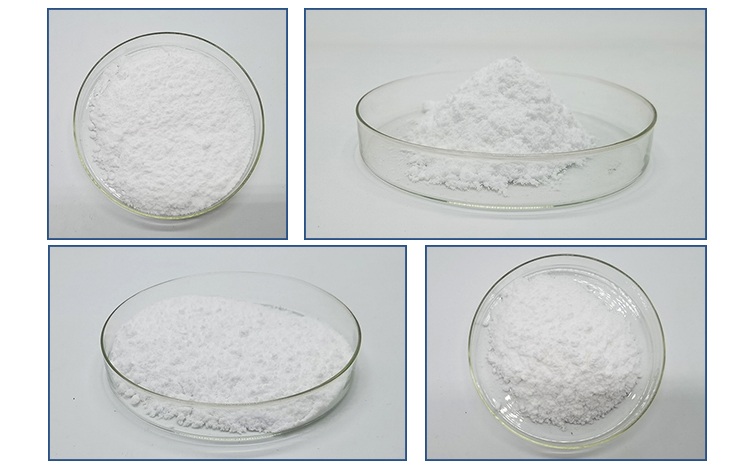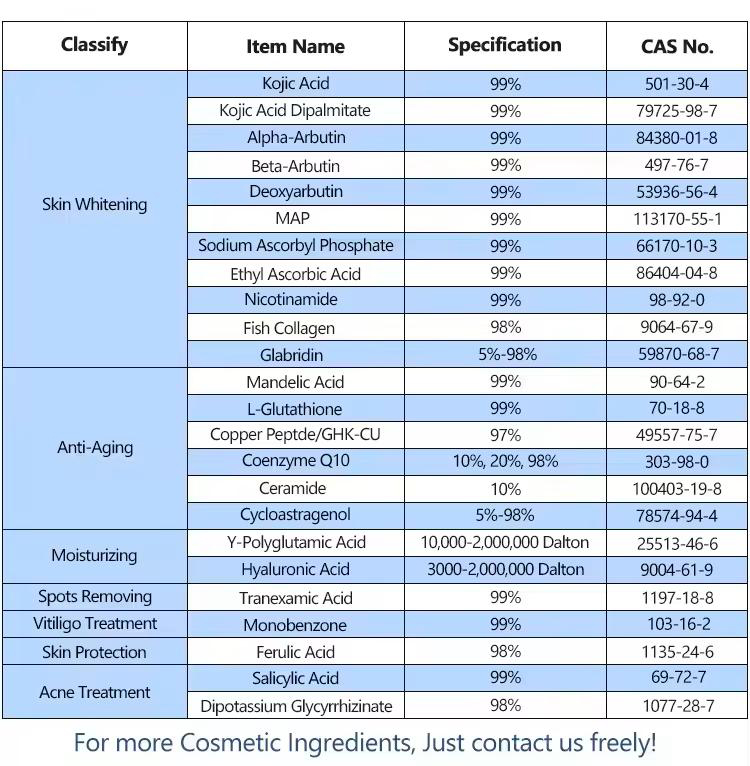Methylparaben, also known as methyl parahydroxybenzoate, is a chemical compound commonly used as a preservative in cosmetics, pharmaceuticals, and food. It is part of the paraben family, which are esters of para-hydroxybenzoic acid. The basic chemical ingredients that make up methylparaben are:
1.Para-hydroxybenzoic acid (PHBA)
A benzoic acid derivative with a hydroxyl group (-OH) attached to the para position of the benzene ring.
Chemical formula: C7H6O3
2.Methanol (Methyl alcohol)
An alcohol with a single carbon atom.
Chemical formula: CH3OH
The synthesis of methylparaben typically involves the esterification of para-hydroxybenzoic acid with methanol. The chemical reaction can be represented as:
C7H6O3+CH3OH→C8H8O3+H2O
In this reaction, para-hydroxybenzoic acid (C7H6O3) reacts with methanol (CH3OH) to form methylparaben (C8H8O3) and water (H2O).

Efficacy and Effects of Methylparaben
Methylparaben is a widely used preservative in cosmetics, pharmaceuticals, and food products. It is one of the parabens, which are esters of p-hydroxybenzoic acid. The primary role of methylparaben is to prevent the growth of bacteria, mold, and yeast, thereby extending the shelf life of products.
Efficacy
Antimicrobial Properties: Methylparaben is effective in inhibiting the growth of a wide range of microorganisms. It is commonly used in combination with other parabens or preservatives to broaden its spectrum of activity and enhance overall antimicrobial efficacy.
Stability: Methylparaben is stable over a wide pH range (4-8) and under various temperature conditions, making it a versatile preservative for different formulations.
Cost-Effectiveness: Due to its efficacy in low concentrations and relatively low cost, methylparaben is a cost-effective preservative choice for many manufacturers.
Safety and Health Effects
Skin Irritation and Allergies: For the majority of the population, methylparaben is considered safe and non-irritating. However, some individuals may experience skin irritation or allergic reactions. The frequency of these reactions is relatively low.
Endocrine Disruption Concerns: There has been some controversy regarding parabens, including methylparaben, as potential endocrine disruptors. Studies have shown that parabens can mimic estrogen in the body, but the levels typically used in consumer products are considered too low to cause significant hormonal effects. Regulatory agencies, such as the FDA and European Commission’s Scientific Committee on Consumer Safety (SCCS), have deemed methylparaben safe for use in cosmetics within specified limits.
Carcinogenicity: There is currently no conclusive evidence to support that methylparaben causes cancer. The debate continues, but regulatory authorities maintain that the low concentrations used in products are safe.
Phototoxicity: Some studies suggest that methylparaben can enhance skin sensitivity to UV light, potentially leading to skin aging or damage when products containing methylparaben are applied to the skin and exposed to sunlight.

Regulatory Status
FDA: The U.S. Food and Drug Administration recognizes methylparaben as generally safe for use in cosmetics and food products within specified limits.
EU: The European Union allows the use of methylparaben in cosmetics, with a maximum concentration of 0.4% for a single paraben and 0.8% for mixtures of parabens.
Conclusion
Methylparaben is an effective and widely used preservative with a long history of use in various consumer products. While concerns about its potential health effects persist, current scientific evidence and regulatory reviews support its safety at the concentrations typically used. Ongoing research and monitoring continue to ensure that methylparaben remains safe for consumers.
